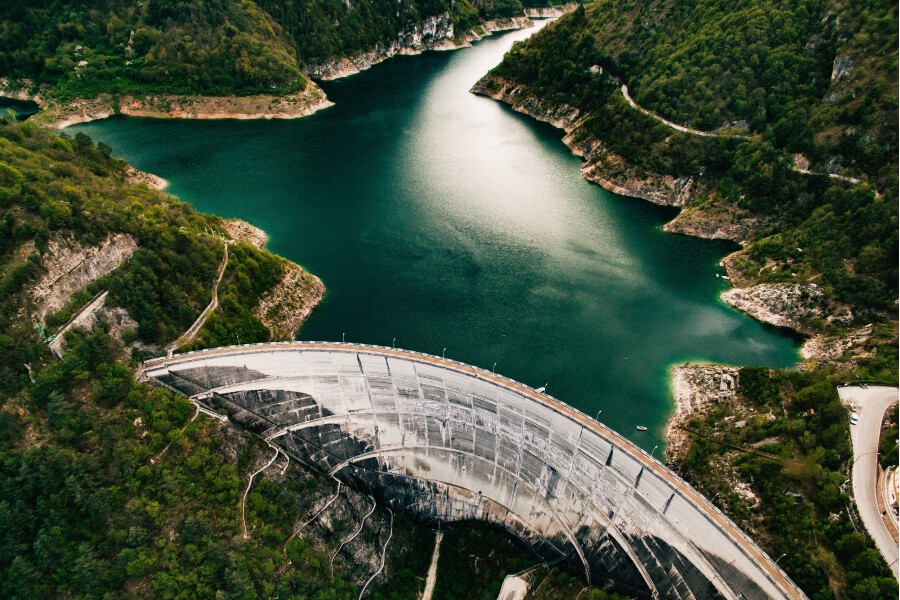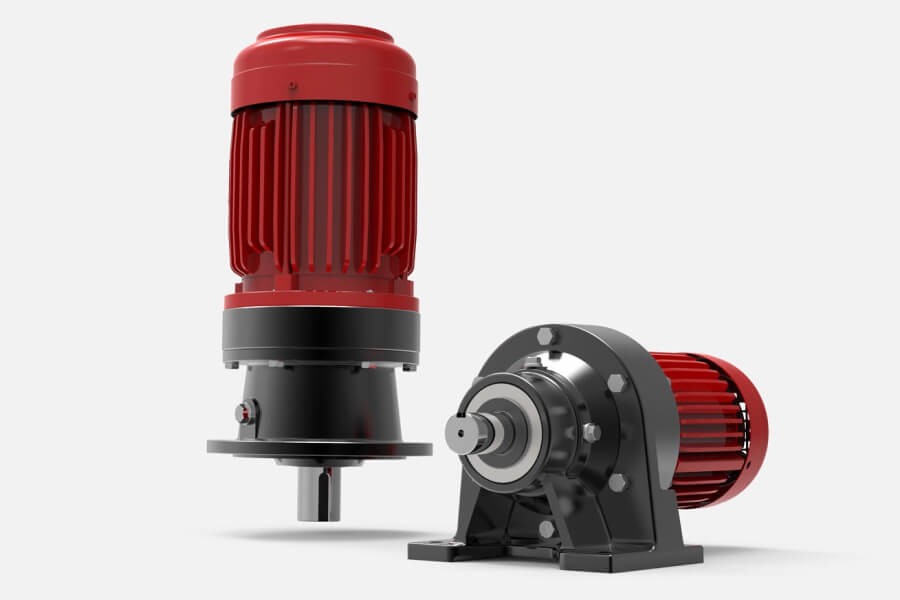Hydroelectric Power Using Reliable Cyclo Gearboxes & Cyclo Drives
The power of running water has been harnessed by humans for thousands of years, firstly by mechanical water mills, and more recently by hydroelectric power stations, which are the largest single source of sustainable, clean renewable energy in 2024. Cyclo drives offer a very reliable, single-source solution for speed reducers, gearboxes and drives for hydroelectric power generation sites that cannot easily be matched by conventional drive configurations.
How does hydroelectric power work?
Most forms of modern hydroelectric power rely on large water turbines to convert water flow into kinetic energy to drive electric generators. There are a host of ancillary and supporting systems that keep the power plant running smoothly, and this includes the need for speed reducers, gearboxes and drives to support hydroelectric power generation.
Hydro power is more flexible than might be obvious at first thought. Dams can adjust flows very precisely to moderate power output through the turbines to match demand, and pumping stations can be used to replenish reservoirs of water as a means of balancing grid load during off peak hours.
This doesn’t mean that hydroelectric power stations are ever completely switched off, although it is possible in multi-turbine stations to redirect water flows to enable individual turbines to be stopped for periodic maintenance.
Why are cyclo drives used in hydroelectric power stations?
The turbines for most hydroelectric power stations keep running day and night. Although total power output for hydroelectric generation is variable, all the support services and equipment need to be extremely reliable to cope with 24-7 operation.
You don’t want sudden and unexpected failures of ancillary equipment to cause interruptions to power generation, so it makes very good sense to specify very high quality gearboxes, speed reducers and drive units, ideally including some degree of redundancy. Standardized, easily swappable spare units enable uninterrupted maintenance scheduling.
Cyclo drives are the logical solution for all types of ancillary equipment in hydroelectric power generation. This is because they have the flexibility and resilience to be used anywhere on site that a speed reducer, gearbox or drive motor is required without needing to maintain a large number of different designs or capacities.
What information do I need to specify a cyclo drive?
It is not difficult to specify the correct cyclo drive for any application, including power industry uses. There are five things that help to build a specification, but our engineers are always happy to discuss your specific requirement to make sure you get the perfect match to your needs.
- The type of equipment being driven
- AGMA gearmotor service class (I, II or III)
- Motor HP & RPM
- Mounting type (vertical, horizontal, or right-angle)
- Sealing & environmental requirements
AGMA Service Classes are used to rate gearmotors for different operational loading conditions. AGMA Classifications range from uniform (I), to heavy shock (III). Cyclo gearmotors and cyclo drives are more shock resistant by design than conventional gearboxes and speed reducers.
Because loads are spread evenly between moving parts, 500% momentary shock loading is within specification of a standard cyclo drive from Transcyko. Cyclo drives are almost immune to thermal overloading due to their very low friction load-sharing design.
What are standard features of Transcyko cyclo drives?
- Overload capacity up to 500%
- Compact size
- Single ratio available from 6:1 to 119:1
- Double stage ratio up to 7569:1
- Triple stage ratio to almost 1 000 000:1
- Ideal for dynamic applications due to low inertia
- Frequent start-stop-reversing capabilities
- Inverter turn-down ratio 10:1 (unbraked), 4:1 or better (braked)
- Up to 1000:1 turn-down ratio in C-face configuration
Transcyko cyclo drives have a low total cost over lifetime compared to conventional gearboxes due to high reliability, long service life, and minimal maintenance requirements. Our redesigned cycloidal tooth profile provides a high contact ratio to withstand overload shocks and smoother operation with reduced noise.
Transcyko cyclo motor speeds are 1750 and 1165 RPM at 60Hz, or 1450 and 980 RPM at 50Hz. Our technical team is happy to discuss any requirement for non-standard input speeds and calculate the resulting horsepower and torque ratings for you.
Cyclo speed reducers & gearboxes are a reliable solution for hydroelectric power producers
The potential issues caused by power generation interruptions drive a demand in hydroelectric power stations for dependable, reliable machinery rated for continuous operation. Cyclo drives and speed reducers share loads across internal components, making them ideally suited for continuous operation with scheduled maintenance and no fear of spontaneous failures.
Why are cyclo gearboxes a good choice for hydroelectric power stations?
- Reliable, consistent performance in continuous operation
- Slow wearing, with shared loads between internal components
- High torque resistance and power capabilities in compact sizes
- One model can perform many different tasks
- No likelihood of thermal overloading
- Sealed units protect the drive and the environment
Transcyko 600 Series Cyclo drives offer a very convenient solution for a wide range of applications. Supplied with many options for mounting and facing, and very efficient at both high and low speeds, a single 600 series cyclo drive can be used to replace many different conventional drives, reducing inventory, maintenance complexity and all the costs associated with maintaining a wide portfolio of different equipment on site.
The Transcyko 600 Series are also backwards compatible with Sumitomo products, so we can supply a cost effective, customer-focused solution to clients looking to upgrade or maintain their existing Sumitomo cyclo drives. Contact us to discuss how we can supply you with a one-stop solution for your needs.


